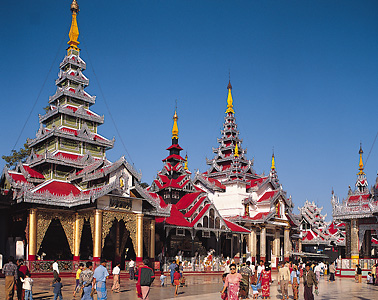Pagoda, << puh GOH duh, >> is a type of tower commonly associated with Buddhist temples. Pagodas exist mainly in China, Japan, and parts of India and southeastern Asia. A typical pagoda has from 3 to 15 stories of decreasing size from bottom to top. Each story of the tower has an overhanging, elaborately decorated tile roof that curves upward at the edges. In many cases, fancifully carved wooden beams and posts support the structure.

In China, most pagodas have eight sides and an uneven number of stories. They are made of wood, masonry, glazed tile, or porcelain and are decorated with ivory, bone, and stonework. Originally, each element in the design of a pagoda had religious meaning. Many Chinese people believed a pagoda brought wealth and happiness to the surrounding community. Japanese pagodas developed from Chinese models. Most Japanese pagodas are made of wood. The ground story may contain shrines and images, and the pagoda’s upper stories may be used to view the surrounding area. In Taiwan, many of the pagodas house the ashes of cremated Buddhists.

Pagodas originated in India from the form of Buddhist burial mounds and temples called stupas. As Buddhism spread eastward, the pagoda form spread with it. Beginning in the 1600’s, imitation pagodas were built in many European gardens.
